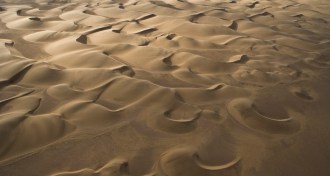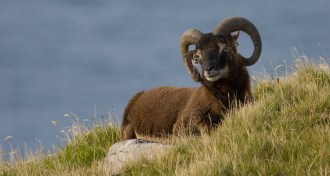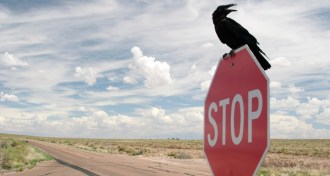News
-
 Humans
HumansBabies learn words before birth
Brain responses suggest infants can distinguish distinct words from altered versions that they learned in the womb.
-
 Psychology
PsychologyBehavioral research may overstate results
'Soft' sciences inflate support for what scientists expected to find, data check suggests.
By Bruce Bower -
 Earth
EarthBreakups maintain barchan dune fields, somehow
Two new theories try to explain how the crescent-shaped sand mountains persist.
By Erin Wayman -
 Astronomy
Astronomy‘Space beads’ push back origins of iron working
Ancient Egyptians used advanced techniques to make beads out of 'metal from the sky.'
By Bruce Bower -
 Astronomy
AstronomyTo determine stars’ physical traits, Kepler sees the light
Measuring stellar brightness can yield useful estimates of stars' size and evolutionary stage, and help in the hunt for planets.
By Andrew Grant -
 Animals
AnimalsFor sheep horns, bigger is not better
Trade-offs between studliness and survival keep less endowed sheep in the mix.
-
 Life
LifeBacteria can cause pain on their own
Microbes caused discomfort in mice by activating nerves, not the immune system.
-
 Animals
AnimalsBirds know road speed limits
Crows, house sparrows and other species judge when to flee the asphalt by average traffic rates rather than an oncoming car's speed.
By Susan Milius -
 Psychology
PsychologyBlood marker may predict suicide
People who killed themselves had higher levels of a gene involved in cell death.
-
 Health & Medicine
Health & MedicinePower of sugar may come from the mind
Only people who believe exertion zaps willpower get a boost from glucose.
-
 Life
LifeYears or decades later, flu exposure still prompts immunity
New forms of influenza viruses can spur production of antibodies to past pandemics in people who lived through them.
-
 Materials Science
Materials ScienceToylike blocks make lightweight, strong structures
Bucking trend toward reducing numbers of parts, MIT engineers suggest building planes from thousands of identical pieces.
By Meghan Rosen